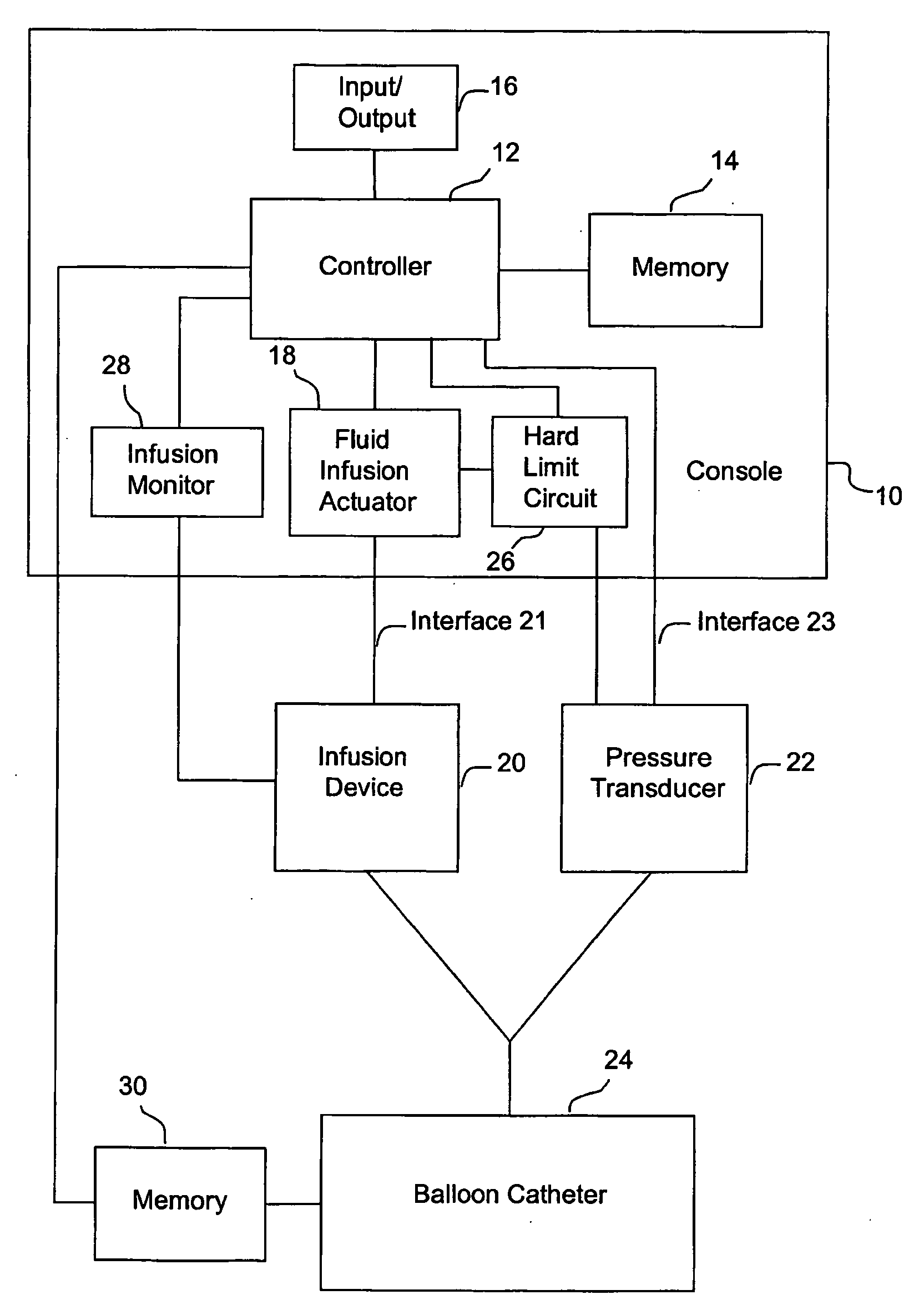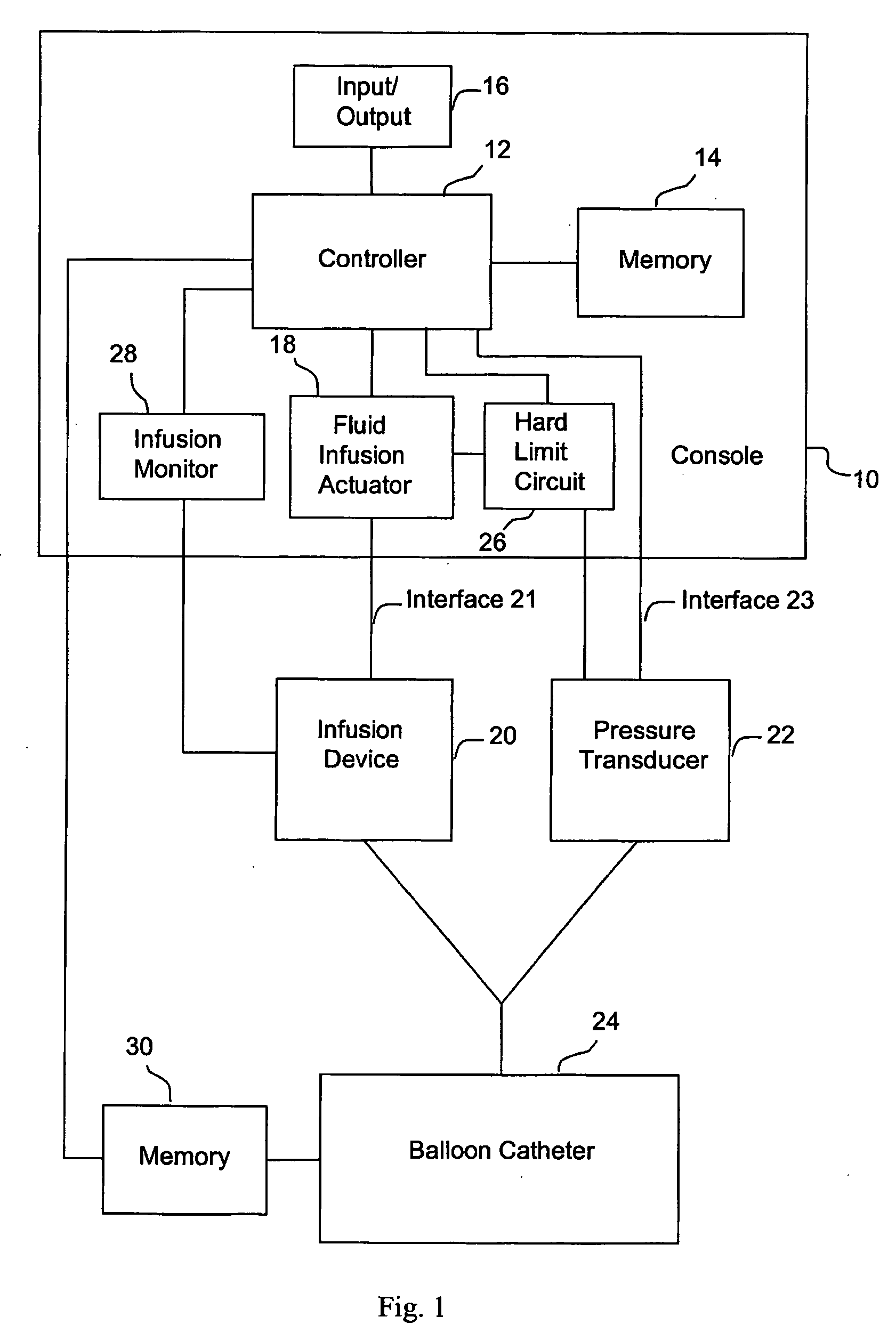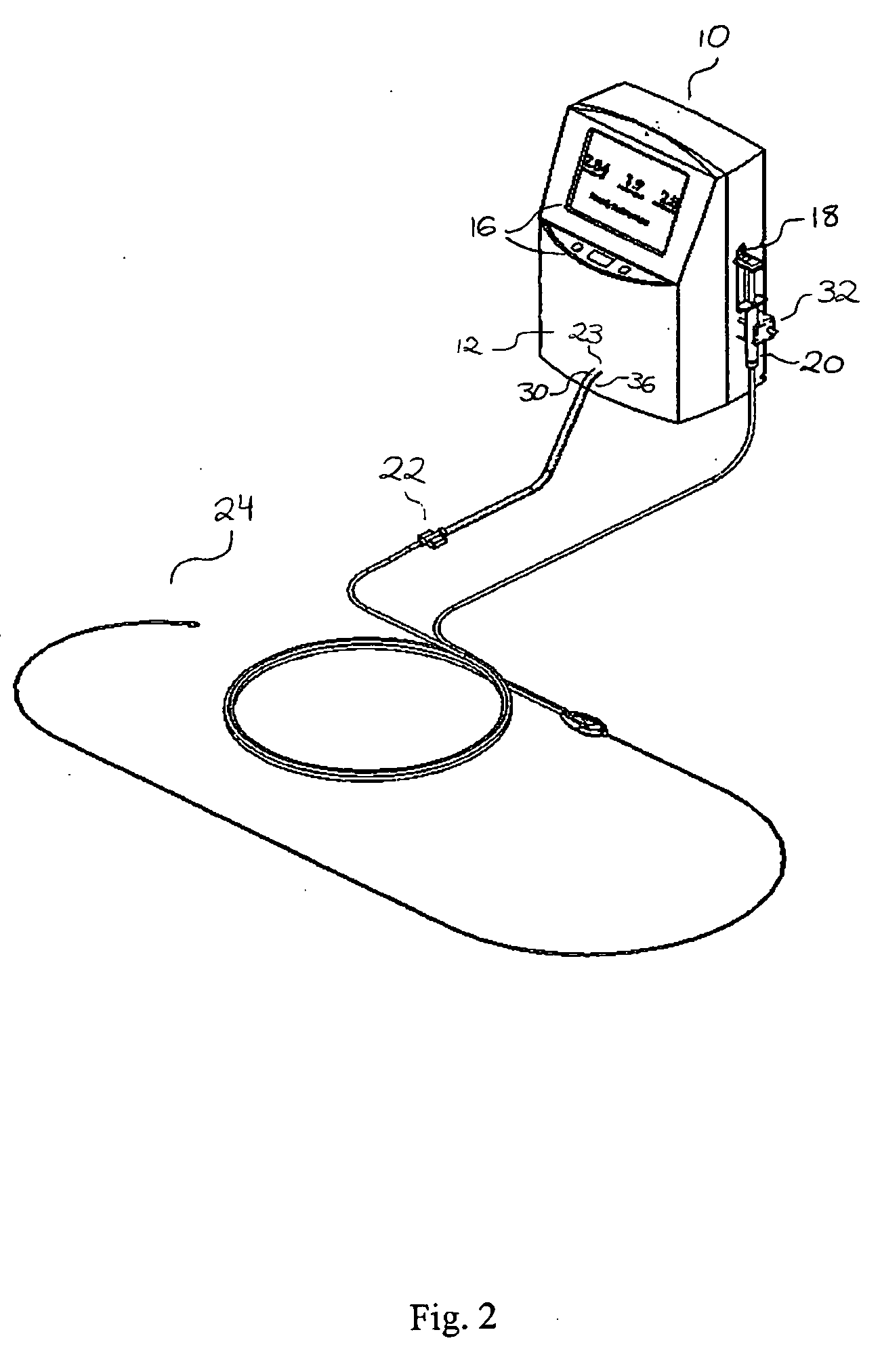Apparatus & method for determining physiologic characteristics of body lumens
- Summary
- Abstract
- Description
- Claims
- Application Information
AI Technical Summary
Benefits of technology
Problems solved by technology
Method used
Image
Examples
example 1
[0110] Measured area using Equation 8=2.63 mm2. Since 2.23Actual hole size=m1·Ac+b1Actual Hole size=0.820·2.63 mm2+0.171 mm2=2.32 mm2
example 2
[0111] Measured area using Equation 8=3.66 mm2. Since 3.45Actual hole size=m2·Ac+b2Actual Hole size=1.52·3.66 mm2-2.24 mm2=3.32 mm2
[0112] Linear equations can be used for each of the calibration and measurement cycles to filter any noise from fluctuations of body lumen pressure (e.g., systolic and diastolic blood pressure fluctuations). Accordingly, in certain variations, the system scans and stores the pressure for every step (volume) that is infused into the catheter, and, by using linear regression analysis, the data is used to filter any noise that the body pressure effect may have on the balloon pressure. For example, a linear equation that may be used to filter body pressure fluctuations is as follows:
Linear equation: Vn=mPn+b (Equation 9)
[0113] where: [0114] m is the slope [0115] b is the offset [0116] Vn is the set of infused volume data [0117] Pn is the set of pressure reading data [0118] Vave is the mean infused volume [0119] Pave is the mean pressure rea...
example
[0133] One specific method of the present invention proceeds as follows. Balloon catheter 24 is purged of all air with a non-compressible fluid (e.g., saline), and balloon 54 of the catheter is placed in a lumen having a predeterminted, fixed diameter. Fluid is infused into the catheter through inflation lumen 66 as described above. Pressure transducer 22, which is in fluid communication with pressure lumen 68, produces a signal indicative of the pressure in pressure lumen 68 that represents the static pressure in the balloon. As noted above, both the fluid infusion actuator 18 and the pressure transducer 22 are in communication with controller 12, which measures infused fluid volume at one or more predetermined pressure values. A typical range of pressure values is 200-300 mmHg. The deflated balloon catheter is then positioned in a body lumen to be measured (such as, e.g., a blood vessel, the intestine, or the urethra), and the balloon 54 manipulated to the point of interest. Typic...
PUM
 Login to View More
Login to View More Abstract
Description
Claims
Application Information
 Login to View More
Login to View More - R&D
- Intellectual Property
- Life Sciences
- Materials
- Tech Scout
- Unparalleled Data Quality
- Higher Quality Content
- 60% Fewer Hallucinations
Browse by: Latest US Patents, China's latest patents, Technical Efficacy Thesaurus, Application Domain, Technology Topic, Popular Technical Reports.
© 2025 PatSnap. All rights reserved.Legal|Privacy policy|Modern Slavery Act Transparency Statement|Sitemap|About US| Contact US: help@patsnap.com



